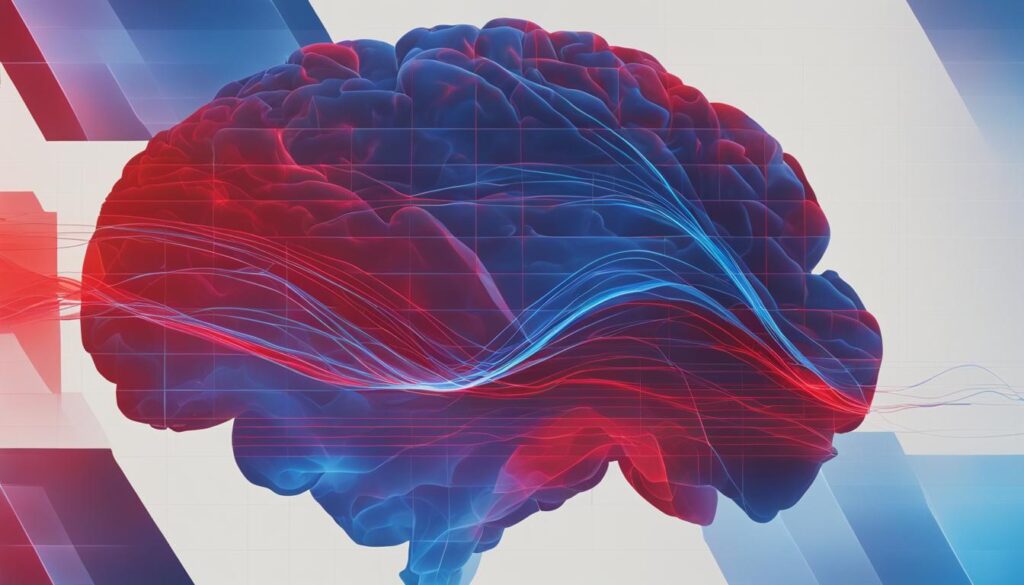Neuroeconomics in Trading, trading psychology, behavioral economics and trading, decision-making in trading, neuroscience and trading, emotions in trading, irrational behavior in trading, cognitive biases and trading, neuroeconomic strategies in trading, neuroscience-based investing, neuroeconomics and market analysis
Neuroeconomics, a multidisciplinary field combining neuroscience, economics, and psychology, is revolutionizing trading strategies in the financial industry. By delving into the intricate workings of the human brain, neuroeconomics provides valuable insights into decision-making processes, emotions, and cognitive biases that influence trading outcomes. This emerging field empowers traders and investment professionals to optimize their strategies, manage risks effectively, and navigate the complex financial landscape with a scientific approach.
Understanding Neuroeconomics in Investment Banking
In the field of investment banking, neuroeconomics provides a unique perspective on decision-making. By studying the neural mechanisms involved in economic choices, investment banks gain insights into how the brain processes information, evaluates risks, and weighs potential rewards. This understanding helps banks make more informed decisions, navigate market complexities, and create value for their clients. It also highlights the impact of emotions, biases, and social influences on financial choices, prompting investment banks to consider these factors when developing strategies that align with client goals and risk preferences.
Decoding the Neural Mechanisms
Neuroeconomics delves into the intricate workings of the brain to uncover the neural mechanisms that underlie decision-making processes. By using advanced technologies such as functional magnetic resonance imaging (fMRI) and electroencephalography (EEG), researchers can observe and analyze brain activity while individuals make economic choices. This allows investment banks to gain valuable insights into the cognitive processes involved, including how information is processed, preferences are formed, and decisions are made.
Neuroeconomics brings together the fields of neuroscience, economics, and psychology to shed light on the complex interplay between the brain and economic decision-making. By understanding the neural processes behind financial choices, investment banks can optimize their strategies and tailor their services to meet the diverse needs of their clients.
Considerations for Investment Strategies
Neuroeconomics highlights the role of emotions, biases, and social influences in decision-making, revealing potential factors that can lead to irrational behavior or suboptimal choices. Investment banks can leverage this knowledge to develop more effective investment strategies that consider these cognitive factors. By incorporating neuroeconomic insights, banks can create personalized recommendations that align with client preferences and risk tolerance, ultimately leading to improved client satisfaction and better financial outcomes.
Furthermore, understanding the neural mechanisms involved in decision-making allows investment banks to anticipate potential biases and counteract them through risk management strategies. By proactively identifying and addressing cognitive biases, banks can implement robust risk mitigation measures and ensure the resilience of their investment portfolios.
| Neuroeconomics in Investment Banking | Key Insights |
|---|---|
| Understanding Neural Mechanisms | Gain insights into how the brain processes information, evaluates risks, and weighs potential rewards. |
| Emotions, Biases, and Social Influences | Consider the impact of emotions, biases, and social influences on financial choices when developing strategies that align with client goals and risk preferences. |
| Decoding Cognitive Processes | Use advanced technologies to observe and analyze brain activity while individuals make economic choices, shedding light on how information is processed, preferences are formed, and decisions are made. |
| Optimizing Investment Strategies | Develop more effective investment strategies by incorporating neuroeconomic insights and considering cognitive factors such as emotions, biases, and social influences. |
| Enhancing Risk Management | Proactively identify and address cognitive biases to implement robust risk mitigation strategies and ensure the resilience of investment portfolios. |
The Role of Neuroeconomics in Risk Management
Neuroeconomics plays a crucial role in risk management within investment banks. By studying the neural mechanisms involved in decision-making, banks can gain valuable insights into risk assessment and develop strategies that go beyond traditional statistical models. This allows them to identify hidden biases, uncover potential blind spots, and enhance risk mitigation strategies. The integration of neuroeconomic insights into risk management frameworks enables banks to make more accurate risk assessments and build resilient investment portfolios.
To illustrate the impact of neuroeconomics in risk management, consider the following example:
“Neuroeconomics provides a unique perspective on risk assessment by taking into account the role of emotions, biases, and social influences in decision-making. Traditional statistical models may not capture these factors accurately, leading to incomplete risk assessment. By incorporating neural insights, investment banks can better understand how individuals perceive and evaluate risks, thereby improving the accuracy of risk assessment and allowing for the development of more effective risk mitigation strategies.”
By leveraging neuroeconomics, investment banks can navigate the complexities of risk management more effectively. The understanding of neural mechanisms and their influence on risk assessment provides banks with a comprehensive view of potential vulnerabilities and opportunities. This holistic approach to risk management allows for the development of robust strategies that can adapt to changing market dynamics, resulting in more resilient portfolios.
| Benefits of Neuroeconomics in Risk Management | Challenges in Implementing Neuroeconomics |
|---|---|
|
|
Neuroeconomics in Algorithmic Trading Strategies

Investment banks are harnessing the power of neuroeconomics to refine their algorithmic trading strategies. By delving into the neural mechanisms that underlie decision-making, these banks gain valuable insights into how the brain processes market data and responds to various stimuli. With this knowledge, they can optimize their algorithmic trading algorithms to better identify patterns, adapt to market dynamics, and capitalize on profitable opportunities.
Neuroeconomic principles provide a deeper understanding of how traders interpret and react to market information. By incorporating these insights into algorithmic trading systems, banks can enhance their trading performance and execution speed. The neural mechanisms at play enable the algorithms to make more informed decisions, resulting in improved liquidity management and overall trading efficiency.
One key aspect of neuroeconomics in algorithmic trading is pattern recognition. By analyzing vast amounts of historical market data, these systems can identify recurring patterns that may indicate future market movements. Recognizing these patterns allows banks to develop trading strategies that exploit market dynamics and increase profitability.
The integration of neuroeconomics into algorithmic trading strategies has the potential to revolutionize the financial industry. By leveraging neural insights, investment banks can achieve a competitive edge by enhancing their trading performance, adapting to changing market conditions, and maximizing profits.
Strengthening Client Relationships through Neuroeconomics
Investment banks are tapping into the power of neuroeconomics to establish and strengthen their client relationships. By understanding the cognitive and emotional factors that influence client decision-making, banks can tailor their services and communication strategies accordingly, providing a personalized and impactful experience. This deeper understanding enables banks to provide personalized investment recommendations, build trust, and deliver superior client experiences.
Neuroeconomics brings to light the cognitive factors that influence client behavior in the investment realm. It allows banks to gain insights into the neural processes underlying decision-making, enabling them to offer tailored recommendations that align with individual goals and risk preferences. By leveraging these insights, banks can anticipate client needs, address concerns, and foster long-term relationships based on a deeper understanding of client behavior.
Emotional factors also play a significant role in client relationships, and neuroeconomics helps banks navigate this aspect effectively. By understanding how emotions impact decision-making, investment banks can adapt their communication strategies, delivering information in a way that resonates with clients. This enhances trust and strengthens the bond between the bank and the client, positioning the bank as a trusted advisor.
The Power of Personalized Recommendations
One of the key benefits of incorporating neuroeconomics into client relationships is the ability to provide personalized investment recommendations. By understanding the neural mechanisms involved in decision-making, banks can tailor their advice to factor in individual preferences, risk tolerances, and financial goals. This level of personalization builds confidence in the client and ensures that their unique needs are met, enhancing the overall client experience.
| Benefits of Neuroeconomics in Strengthening Client Relationships | Details |
|---|---|
| Enhanced understanding of cognitive and emotional factors | Helps banks deliver tailored investment recommendations and communication strategies. |
| Improved trust and client satisfaction | By incorporating neuroeconomic insights, banks can build trust and strengthen the bond with clients. |
| Personalization and customization | Neuroeconomics enables banks to provide personalized recommendations, enhancing the overall client experience. |
The integration of neuroeconomics into client relationships represents a significant step forward for investment banks. By harnessing the power of cognitive and emotional factors, banks can establish themselves as trusted advisors, providing personalized recommendations and tailored strategies that deliver value to their clients.
Challenges and Considerations in the Application of Neuroeconomics

The application of neuroeconomics in investment banking presents several challenges and considerations that must be addressed. As a relatively new and evolving field, ongoing research and validation are necessary to ensure the effectiveness of neuroeconomic strategies. Investment banks need to thoroughly understand the neural mechanisms underlying economic decision-making and validate their findings through rigorous scientific methods. This process is crucial for building trust in neuroeconomic insights and ensuring their practical application in real-world financial scenarios.
Alongside research and validation, ethical considerations play a significant role in the application of neuroeconomics. Privacy concerns arise from the collection and use of neural data, as investment banks need to handle sensitive information related to the brain activity of their clients. Respecting privacy rights and adhering to data protection regulations is paramount for maintaining trust between banks and their clients.
Additionally, regulatory frameworks must be considered in the application of neuroeconomics. As investment banks adopt neuroeconomic strategies, they need to ensure compliance with existing financial regulations. Regulatory bodies may introduce specific guidelines or requirements for the use and implementation of neuroeconomic insights, and investment banks must stay updated and adapt accordingly.
“The successful application of neuroeconomics in investment banking relies on ongoing research and validation, ethical considerations, and compliance with regulatory frameworks.” – [Anonymous]
Furthermore, the limitations of neuroeconomics must be acknowledged. While it provides valuable insights into decision-making processes, it is not a panacea for all financial challenges. Neuroeconomic strategies should be complemented with traditional financial analysis and expertise to achieve holistic and comprehensive decision-making in investment banking.
Addressing the challenges and considerations in the application of neuroeconomics is crucial for unlocking its full potential. Investment banks must navigate these complexities responsibly, ensuring that the integration of neuroeconomic insights aligns with scientific rigor, ethical standards, privacy regulations, and financial regulations.
Collaboration and Innovation in Neuroeconomics

As investment banks recognize the potential of neuroeconomics in shaping their strategies and decision-making processes, collaboration with experts from various fields becomes paramount. Neuroscientists, behavioral economists, and data scientists all contribute unique perspectives to the integration of neuroeconomic insights. By forming partnerships with academic institutions and research organizations, investment banks can ensure they stay at the forefront of neuroeconomic advancements and drive innovation in the industry.
Collaboration with neuroscientists allows investment banks to tap into the latest findings in brain science and understand how neural processes influence economic decision-making. These collaborations enable banks to gain deeper insights into the cognitive and emotional factors that impact client behavior. By incorporating this knowledge, banks can provide enhanced services, personalized recommendations, and build trust with their clients.
Behavioral economists bring valuable expertise in understanding human behavior and decision-making biases. By working alongside these experts, investment banks can develop strategies that take cognitive biases into account, leading to more informed and effective decision-making. This collaboration also helps banks develop behavioral nudges that encourage desired client behaviors and optimize investment outcomes.
Data scientists play a crucial role in the integration of neuroeconomics in investment banking. By analyzing large datasets and applying advanced analytical techniques, they can uncover patterns and insights that inform trading strategies, risk management, and client relationship management. This collaboration bridges the gap between neuroscience and practical application, ensuring that the neural mechanisms studied in research translate into actionable strategies.
The Benefits of Collaboration
The collaboration between investment banks and experts in neuroeconomics brings several benefits. By working together, these partnerships drive innovation and push the boundaries of traditional investment strategies. The combination of neuroscience, economics, and psychology creates a multidisciplinary approach that enhances decision-making processes and offers unique insights into human behavior.
Furthermore, collaboration with academic institutions and research organizations allows investment banks to access cutting-edge research and validation of neuroeconomic theories. This ensures that the integration of neuroeconomics aligns with best practices and continues to evolve alongside the field’s advancements.
Driving Innovation in Investment Banking
Collaboration and innovation go hand in hand in the application of neuroeconomics in investment banking. The diverse expertise brought by neuroscientists, behavioral economists, and data scientists fuels the development of new strategies, risk management techniques, and client-centric solutions. By embracing collaboration and staying actively engaged in the neuroeconomic community, investment banks can leverage the latest insights to remain competitive in a rapidly evolving financial landscape.
Conclusion and Future Outlook
The application of neuroeconomics in investment banking provides a competitive advantage in today’s financial landscape. By understanding the neural processes that drive decision-making, investment banks can develop strategies that align with client goals, effectively manage risks, and deliver superior client services. The integration of neuroeconomic insights enables banks to stay at the forefront of innovation and adapt to the complexities of the market.
As the field of neuroeconomics continues to evolve, ongoing research and validation are crucial. Investment banks must collaborate with experts in neuroscience, behavioral economics, and data science to advance their understanding and validate their findings. These partnerships with academic institutions and research organizations ensure that banks are utilizing the latest neuroeconomic insights to enhance their strategies and decision-making processes.
In the future, the application of neuroeconomics in investment banking will only grow in importance. Banks that embrace its potential will position themselves for success by capitalizing on the valuable insights it offers. By leveraging the knowledge of neural processes, investment banks can optimize their strategies, manage risks more effectively, and provide personalized services to their clients. With continued research, validation, and collaboration, investment banks can stay ahead of the curve and drive innovation in the ever-changing world of finance.